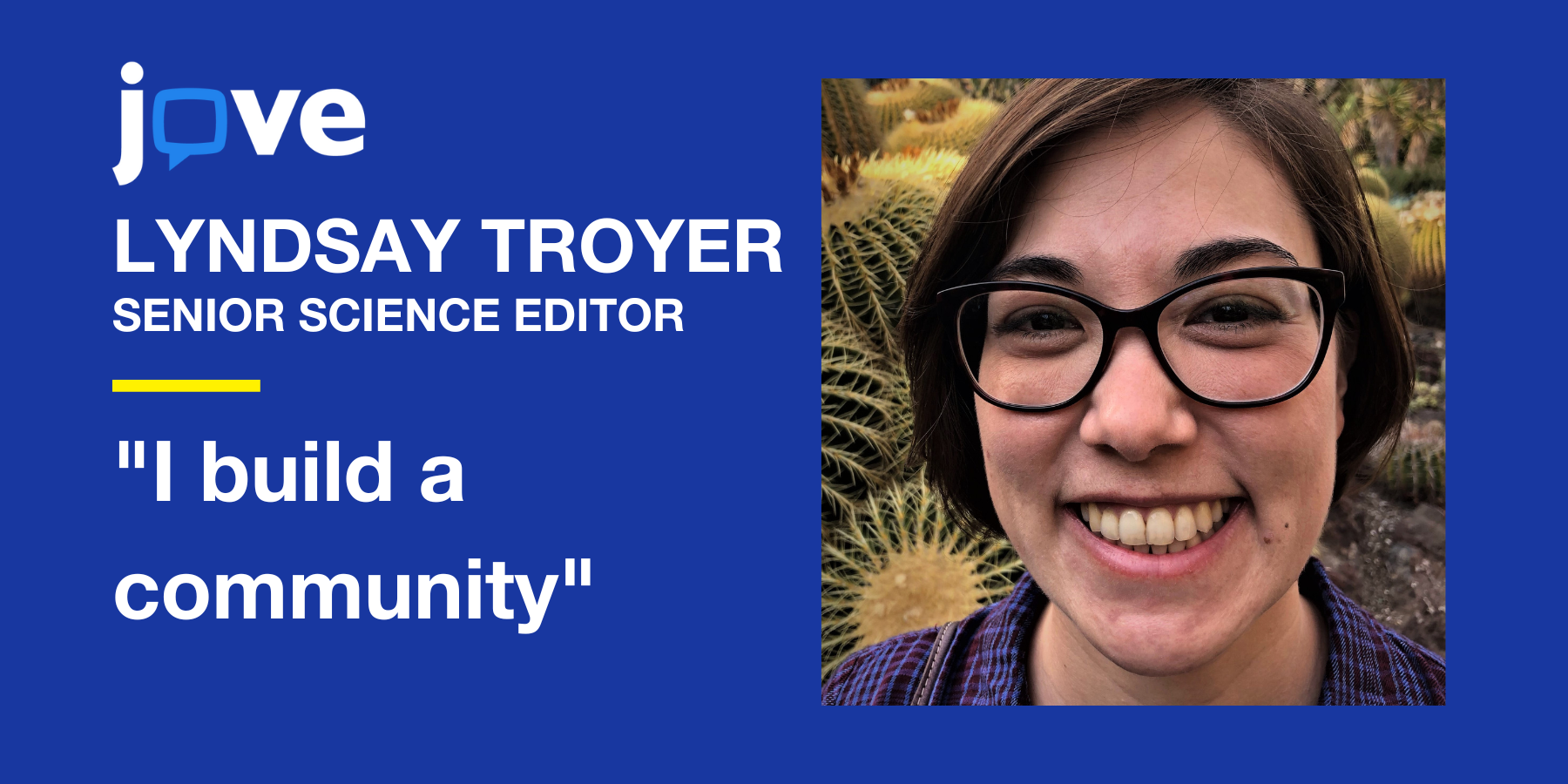JoVE Snapshot: This is a regular series profiling the JoVErs doing outstanding work in editorial, customer success, videography, and more. Together, they are changing how science is done.
Name: Lyndsay Troyer
Title: Senior Science Editor
Degree: Ph.D., Analytical Chemistry, Colorado State University
What do you do at JoVE?
My role is to increase awareness of JoVE Journal among our users and the research community. I build a community of authors and researchers around the journal, and I get to work with people across the company.
What in your education and research background prepared you to do your job?
I have a Ph.D. in analytical chemistry from Colorado State University, but my research was in arsenic and uranium transport in soils. I went to Washington University in St. Louis to do a postdoc, again still on uranium geochemistry. For both my Ph.D. and postdoc work, I was focused on using synchrotron-based X-ray techniques. However, what I relate to most from my Ph.D. work is that now I’m working on all sorts of different projects at the same time and unexpected things come up. You’re trying to figure out solutions to things all the time; I’m doing all sorts of different projects at JoVE, some related to editorial, and some related to marketing, and I see all the different parts of JoVE.
How might JoVE have helped you when you were a researcher?
Something like a JoVE video would been useful in my lab during my Ph.D. I didn’t know about JoVE at all when I was a Ph.D. student. During my Ph.D., I was trying to set up some soil microcosms, and as I said, my background is in chemistry. I didn’t really have any microbiology experience and it was difficult for me to figure out how to set these up successfully. I didn’t have anyone else in my lab working on these systems, and I had to build them myself and didn’t have anyone else to support me.
What I ended up doing was calling someone on the phone and hearing what he had done for his systems. I finally got something to work in my system. But if this researcher had published a JoVE video, I could have easily watched it and seen what he had done without having to track him down.
What's the unique value of JoVE?
It’s the video component. l don’t know of any other journal that has a video with every article that it publishes. The video is amazing! It’s helpful for scientists to see exactly what is happening in a method in a lab. A lot of small details are lost in methods sections. If you’ve ever looked at a methods section, you probably know it’s sometimes only a few paragraphs long. There are all sorts of methods that were done for one paper and it’s difficult to figure out exactly what someone did. When you see a JoVE video, you really see the details that are sometimes lost in the text.
I think JoVE is useful to standardize basic techniques across labs or in a lab. When I started my Ph.D., we were doing something called the Ferrozine method. It’s a way to measure iron in an aqueous solution, and it wasn’t standardized even in our research group. It’s definitely not standardized generally across groups using it. A visiting scientist from Germany showed my lab what they were doing in her lab — and the German researchers were doing the procedure in a very different way than the way we did it. I learned a better way to do it from her, and I tried to convince my advisor to do it the same way. It took a while to get him on board. If the method had been standardized through something like a JoVE article, it would have ensured the results that people were getting were more consistent across labs.
It’s really satisfying to hear other people’s experiences with JoVE, that JoVE is helping with reproducibility and that people are using JoVE videos in their labs to transfer their techniques between students and collaborators.
What’s your favorite movie?
“Harold and Maude.” It’s a really weird movie, and pretty unique, but also very hopeful. It gives the message to live life and value laughter in the end.

